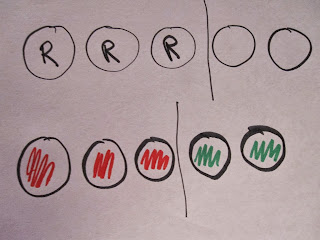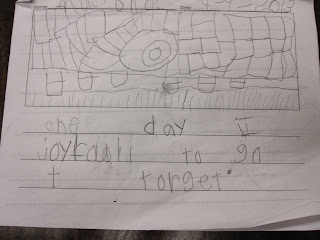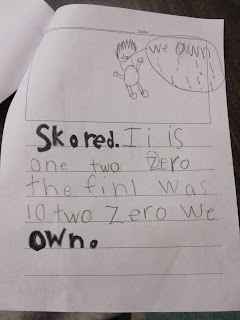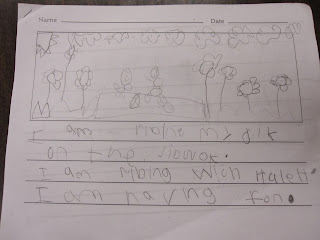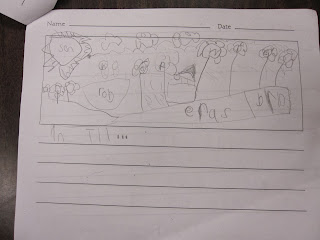I used circles to prove how I got my answer, but your child may chose a way that works for them. Some children like to put the circles in a ten frame to visually see the numbers and other like to use a number line to show their thinking. The use of any of these strategies is fine as long as your child is understanding what the problem is asking. If your child is confused using a ten frame or number line encourage them to try using circles to illustrate what the problem is asking.
The most challenging problems are the put together and take apart problems. These problems involve decomposing numbers instead of adding more or taking some away.
Three red apples and two green apples are on
the table. How many apples are on the table?
In the problem above, your needs to understand that they are putting the pieces together to get a total number.
Another problem type involves your child decomposing a number into two parts, where you know one of the parts:
Five apples are on the table. Three are red and
the rest are green. How many apples are
green?
In order to solve the problem above, your child needs to draw the total and then understand that they are splitting the total apart. One common misconception is that children draw the 5 apples and then draw 3 more. If this happens, ask your child if you are adding more apples to the table? Most of the time, once they stop and think about it they realize they are not adding more, but instead of splitting the apples into two groups (red and green).
The last put together/take apart problem type is the hardest for adults to understand because we are use to having only 1 correct answer and this problem type has multiple correct answers.
Grandma has five flowers. How many can she put in
her red vase and how many in her blue vase?
In this problem type, your child needs to understand how to decompose numbers into two parts. They can pick any possible way to decompose the total number and will have a correct answer.
I hope this is helpful as we continue problem solving throughout the year.

